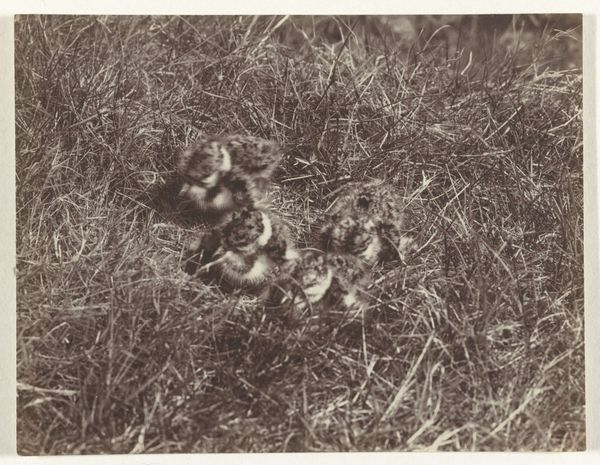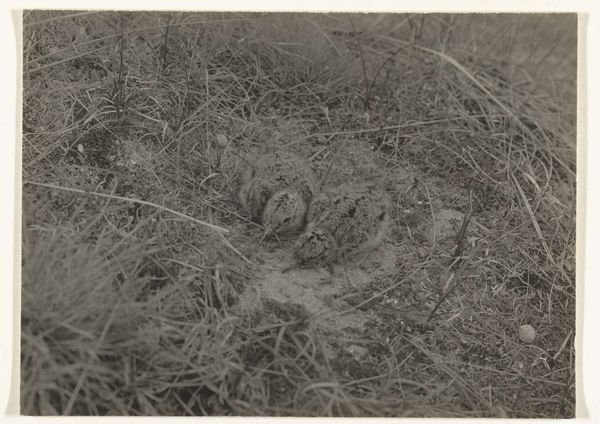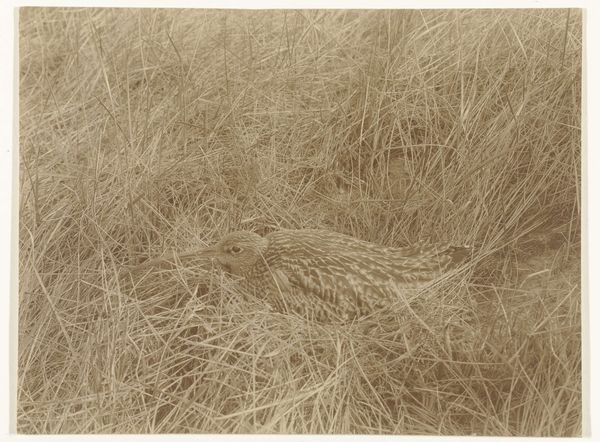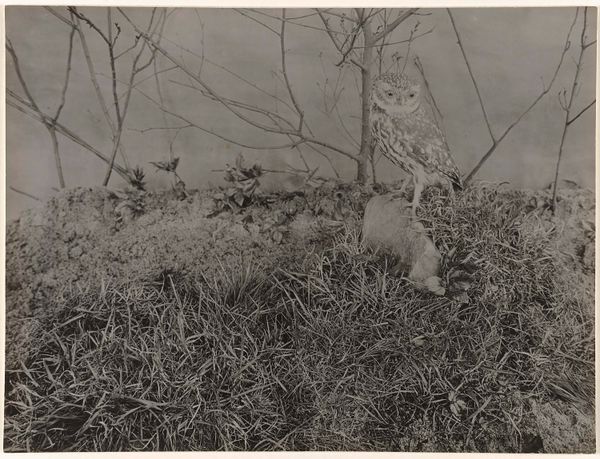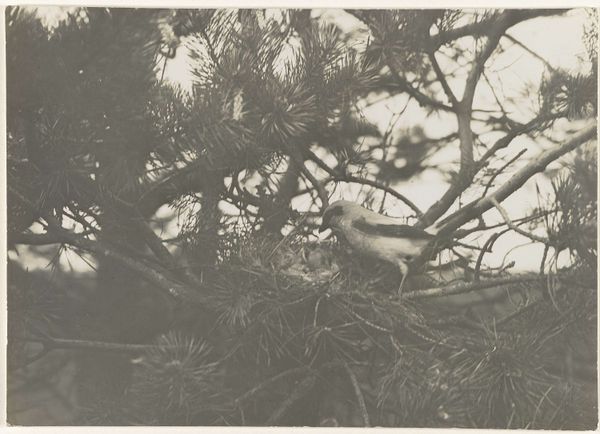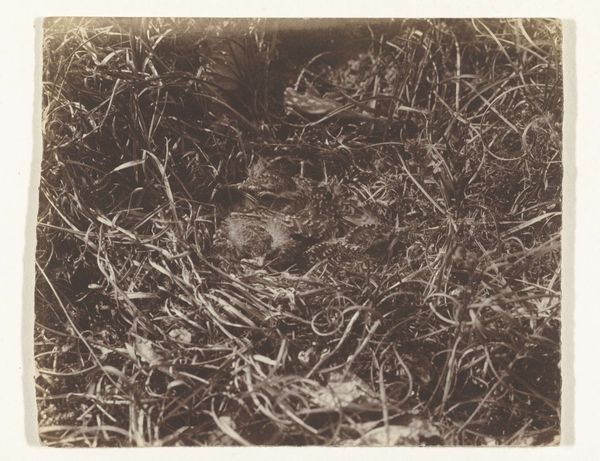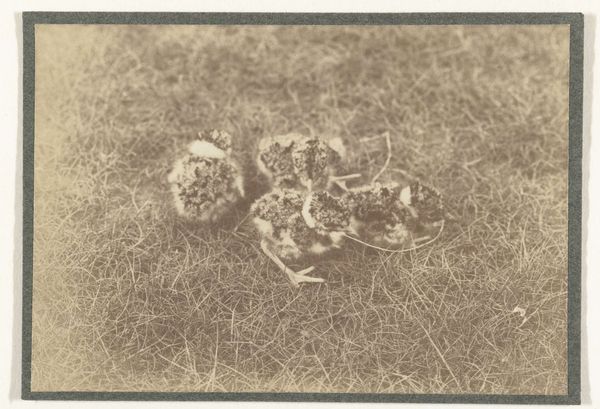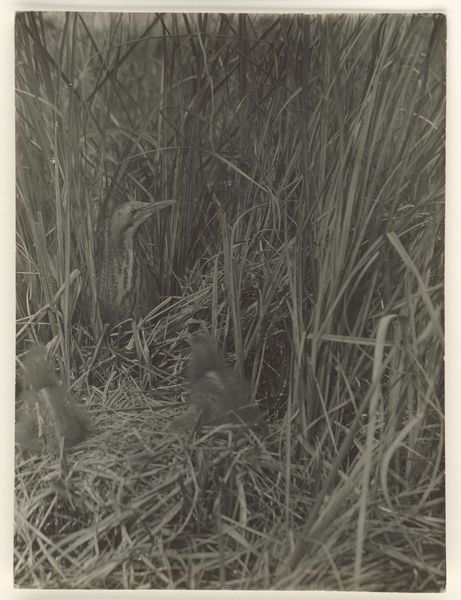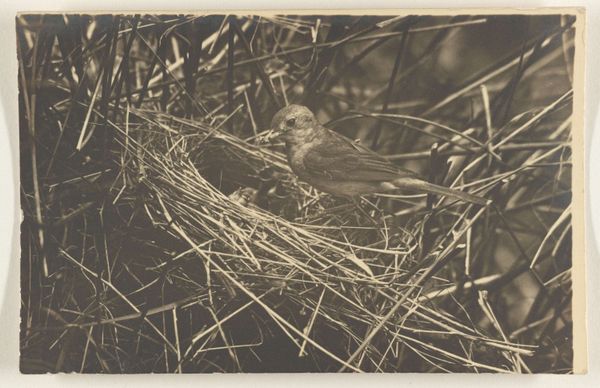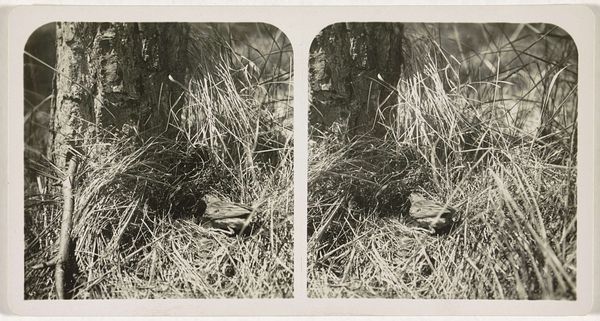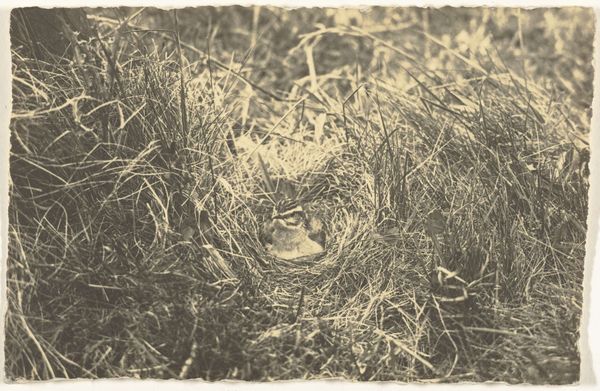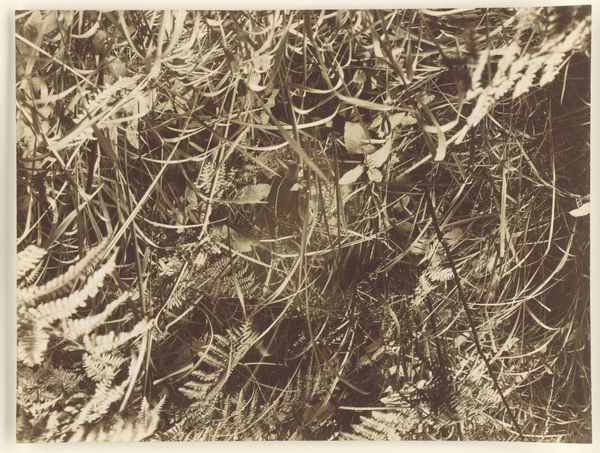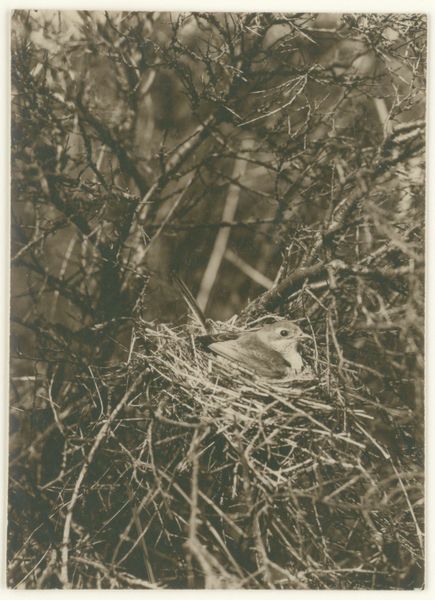
photography, gelatin-silver-print
#
still-life-photography
#
landscape
#
photography
#
gelatin-silver-print
#
realism
Dimensions: height 124 mm, width 174 mm
Copyright: Rijks Museum: Open Domain
Curator: Here we have a gelatin-silver print titled "Drie jonge tureluurs op hun nest (vogels)," or "Three young redshanks on their nest (birds)," by Richard Tepe. It was taken sometime between 1900 and 1930. Editor: It's so delicate. A real sense of vulnerability, seeing these tiny birds huddled together in their nest. The monochromatic tones amplify that fragility, almost like a forgotten memory. Curator: Indeed. Tepe, though considered an amateur photographer, worked with an impressive dedication to documenting nature, which during this period required considerable labor in both accessing and recording his subjects. This dedication suggests a social context increasingly valuing both naturalism and the ability for middle-class citizens to engage in scientific pursuits. Editor: I get that. The texture is fantastic; it feels almost tangible. You can practically feel the softness of the downy feathers and the dryness of the grass blades surrounding them. Makes you want to protect them. Curator: And the choice of gelatin silver as the print medium also speaks to something about mass reproducibility in image making. It was a relatively accessible process that still imbued the final work with an aura of meticulous craft, allowing this nature photography to gain widespread distribution and influence public perceptions about wildlife. Editor: Absolutely. It’s amazing how such a still, quiet image can feel so alive. Like you’ve stumbled upon a secret little world hidden away in the tall grass. Curator: Precisely. The work encourages our inspection into the means and circumstances around photography as both material craft and documentary record. Editor: Yes, and what really resonates for me is that whisper of maternal comfort. Tepe’s photo captures not just a scientific observation but an emotional bond with nature. Curator: A fascinating, almost tender consideration for subjects we might typically overlook. Editor: Exactly. It reminds me to seek out and protect the fleeting beauties in our surroundings.
Comments
No comments
Be the first to comment and join the conversation on the ultimate creative platform.
